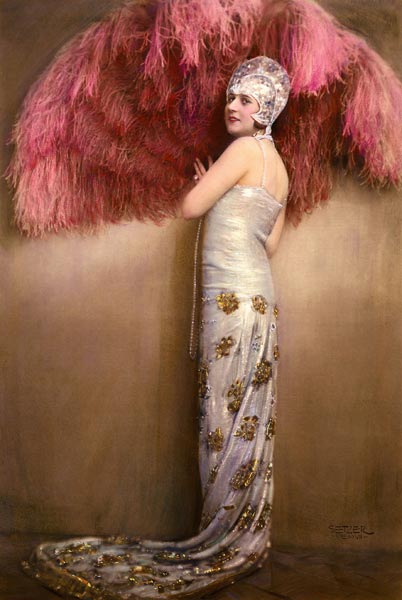
beautyme collections culture cuisine motor music search
 Dance and music glamour on stage and on celluloid
Dance and music glamour on stage and on celluloid
The Theatermuseum in Vienna presents from 2 February until 24 September 2012 for the first time pieces from the own collection concerning the operetta - an early form of the musical. The operetta was developed in the mid 19th century from a mix of opera and 'Singspiel' (can be translated as 'singplay'). The exhibition runs under the title 'Welt der Operette - Glamour, Stars und Showbusiness'.
The Viennese operetta isn't researched well as the stories are trivial (mostly love stories as a comedy of errors which is spiced with slap stick humour where one word gives the other) and the appearances of the actors are frivol (excessive and in some operettas sexually provocative costumes, the scenes are 'overacted' and the set design as a whole is overladen). The operetta wasn't counted to the important phenomena of theatre, culture or social history, albeit even this form of entertainment with choreography (inspired by popular dances like Waltz, Charleston...) and catchy songs carries socio-critical content.
fig.: Viennese operetta star Betty Fischer in 'Die Königin' by Oscar Straus. Photo: colored by hand, 1927. (C) Imagno.
One theme of the exhibition at the Austrian Theatre Museum is the racial persecution of many of the artists from the theatre and music business after 1938, such as the Jewish composer Oscar Straus (born 1870 in Vienna) who had to leave the city. Oscar Straus moved at first to Paris, later to New York (worked on the Broadway) and Hollywood. After the war he returned home.
Video: 'Hello Dolly' (1969), directed by Gene Kelly, with Barbra Streisand in the leading role of 'Dolly Levi'. The video shows Streisand singing the famous duet of the title-song with Louis Armstrong.
The musical 'Hello Dolly' is a good example for the history of the operetta which was developed from the 'Singspiel' such as Johann Nepomuk Nestroy has written ('Hello Dolly' bases on the singplay 'Einen Jux will er sich machen' from 1842; Nestroy was born 1801 in Vienna) and is the predecessor of the musical. In the mid of the 20th century, musicals became glamorous 'cross-media' theatre pieces with performances on stage and screenings on celluloid in movie theatres.